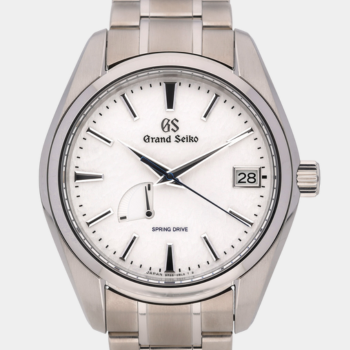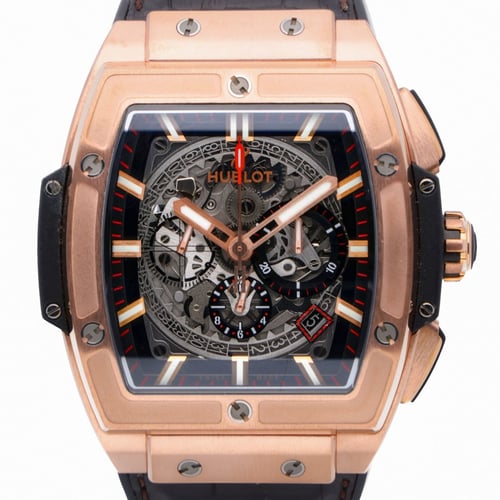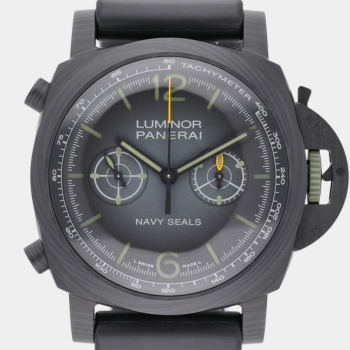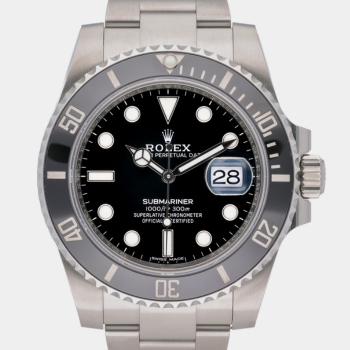The watch world has always been a space where tradition meets innovation. For centuries, stainless steel and precious metals like gold and platinum dominated the landscape.
But as technology advances and consumer expectations evolve, contemporary watchmakers are turning to new materials - materials that are lighter, stronger, and more resistant to wear. Among the most significant developments in modern horology are the integration of titanium, ceramic, and carbon composites.
These advanced materials aren’t just about aesthetics; they’re changing the way we wear and experience time.

Titanium first gained prominence in aerospace and medical fields, known for its exceptional strength-to-weight ratio and hypoallergenic nature. It's no surprise that this high-performance metal eventually found its way into luxury watchmaking. Compared to stainless steel, titanium is around 40% lighter, making it ideal for larger watches that remain comfortable on the wrist over extended periods.
Brands such as Grand Seiko, Panerai, and IWC have embraced titanium, particularly in their professional and tool-oriented timepieces. Take the IWC Aquatimer Automatic 2000, for instance - its titanium case reduces overall weight without sacrificing strength, an essential feature for a dive watch engineered to withstand depths of up to 2,000 meters.
In addition to its lightweight properties, titanium is also highly resistant to corrosion, making it especially well-suited for marine environments. While raw titanium has a muted grey tone, manufacturers often enhance its appearance and durability using various surface treatments or high-grade alloys like Grade 5 (Ti-6Al-4V), which offer better polish and increased scratch resistance. Despite these advancements, titanium can still be susceptible to scuffing, prompting ongoing innovations in surface hardening techniques.
If titanium is about utility, ceramic brings a level of refinement and permanence to modern watchmaking. Made from zirconium oxide or other high-tech materials, ceramic cases and bezels are extremely hard—about four times harder than stainless steel - and virtually scratch-proof. This makes them ideal for maintaining a pristine look even after years of daily wear.
Ceramic is also incredibly lightweight, resistant to fading, and thermally stable, meaning it doesn’t heat up in the sun or feel cold against the skin. This makes it not only beautiful but practical.
Omega was one of the pioneers of full-ceramic watches, most notably with the Speedmaster “Dark Side of the Moon”, a sleek black chronograph carved from a single block of zirconium oxide. Similarly, Hublot has mastered the art of coloured ceramic, including vibrant red and blue variants in their Big Bang collection - a feat that took years of research to achieve without compromising strength.
Ceramic is not without challenges. It’s brittle compared to metals, which means that while it’s hard to scratch, a sharp impact could cause cracking or chipping. But with careful wear and modern production techniques, it remains one of the most desirable materials in high-end watchmaking.


Carbon composites represent the cutting edge of watch case technology. Unlike titanium and ceramic, which are single elements or compounds, carbon is often used as a composite material - a blend of carbon fibers embedded in a polymer matrix. This creates cases that are extremely light, highly durable, and visually striking with their marbled or layered textures.
Carbon watches exude a technical, sporty aesthetic, often used by brands looking to push the boundaries of modern watch design. Richard Mille, for instance, has famously embraced carbon TPT (Thin Ply Technology), producing ultra-light watches worn by athletes like Rafael Nadal. The RM 27-01, one of the lightest tourbillon watches ever made, weighs just 19 grams including the strap, thanks to its carbon case.
Panerai’s Carbotech and Luminor Submersible models also use carbon-based cases, offering stealthy looks and robust construction. Carbon is not only lighter than titanium - it can be over 50% lighter - but also offers a unique tactility and appearance that can’t be replicated by traditional metals.
Moreover, carbon composites offer shock resistance and temperature stability, making them ideal for both sports and aviation watches. As production methods become more refined and scalable, we can expect carbon materials to appear in more mainstream offerings as well.
The use of titanium, ceramic, and carbon isn’t just about novelty. These materials directly affect how a watch feels, how it performs, and how long it lasts. They cater to modern lifestyles where people want a watch that’s lightweight enough to forget on the wrist, strong enough to withstand impact, and stylish enough to make a statement.
They also represent a shift in how we think about luxury. Once, luxury meant precious metals and heavy cases. Now, it increasingly means performance-driven innovation and high-tech craftsmanship. A ceramic-cased chronograph or a carbon composite diver isn’t just a fashion choice - t’s a statement about what 21st-century luxury looks like.
Beyond performance, these materials offer something aesthetically unique.
The matte stealth look of bead-blasted titanium, the lustrous sheen of polished ceramic, or the organic swirls of forged carbon - these textures and finishes allow watchmakers to differentiate themselves in a saturated market.
Even traditional brands are adopting these materials to bring modern relevance to classic designs. Rolex’s Cerachrom bezel on the Submariner and GMT-Master II, for instance, combines ceramic’s scratch resistance with the brand’s timeless tool-watch heritage.

As tastes and lifestyles change, so does the way watches are made. Materials like titanium, ceramic, and carbon aren’t passing trends - they’re a practical response to the demand for lighter, tougher, and more contemporary timepieces.
While watch design often draws from the past, these modern materials show that the industry is still pushing forward. Whether you're a serious collector, an active wearer, or just looking for a stylish, durable watch for everyday use, these innovations offer more than just looks - they reflect where watchmaking is headed.
Browse our carefully curated collection of Carbon, Ceramic and Titanium watches below. We stock all the major luxury watch brands, so you're sure to discover a piece that fits your style. And if you don’t see exactly what you’re after, our expert team specialises in sourcing timepieces to match your needs.
Don’t miss the chance to own the watch you’ve been searching for. Fill out the form below, and one of our helpful team members will get back to you as soon as possible.